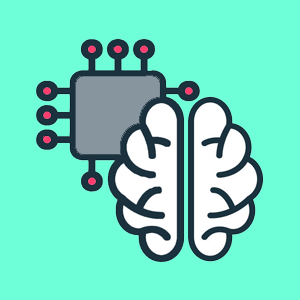 Artificial Intelligence (AI) and Machine Learning (ML) have rapidly emerged as the dynamic duo reshaping the modern world. These technologies have transcended their sci-fi origins and have firmly established themselves as transformative forces across industries, influencing how we learn, how healthcare is administered, and how individuals acquire new skills. The power of AI and ML is profoundly felt in the fields of education, healthcare, and training, where they are revolutionizing conventional approaches, unlocking new possibilities, and driving unprecedented progress.
Artificial Intelligence (AI) and Machine Learning (ML) have rapidly emerged as the dynamic duo reshaping the modern world. These technologies have transcended their sci-fi origins and have firmly established themselves as transformative forces across industries, influencing how we learn, how healthcare is administered, and how individuals acquire new skills. The power of AI and ML is profoundly felt in the fields of education, healthcare, and training, where they are revolutionizing conventional approaches, unlocking new possibilities, and driving unprecedented progress.
The breathtaking pace of advancements in AI and ML has ushered in an era of innovation, fostering a profound reimagining of education, healthcare, and professional training. In this comprehensive article, we will delve into the remarkable strides made by AI and ML in these domains, elucidating the intricate ways in which these technologies are enriching our lives and societies as a whole.
Section 1: AI and Machine Learning in Education
- Personalized Learning: AI and ML algorithms have enabled the development of personalized learning platforms. These platforms analyze individual student data, such as learning patterns, strengths, and weaknesses, to tailor educational content. Adaptive learning systems can recommend specific exercises, lessons, or resources, ensuring that students receive a customized and effective learning experience.
- Intelligent Tutors: Intelligent tutoring systems use AI to provide real-time assistance to students. They can answer questions, explain concepts, and offer guidance on coursework. These AI-driven tutors are available 24/7, allowing students to receive help when they need it, contributing to better academic performance.
- Predictive Analytics: In education, predictive analytics leverage AI to forecast student outcomes, helping institutions identify at-risk students who may require additional support. By analyzing historical data, schools can intervene early to improve student retention and overall success.
- Automating Administrative Tasks: AI and ML streamline administrative tasks for educational institutions. This includes automating admissions, enrollment, and even grading. This reduces the administrative burden on educators, allowing them to focus on teaching and supporting students.
Section 2: AI and Machine Learning in Healthcare and Medicine
- Disease Diagnosis: AI and ML are becoming increasingly valuable in medical diagnosis. Machine learning models can analyze medical images, such as X-rays and MRIs, to detect diseases like cancer with high accuracy. They can also help identify patterns and anomalies in patient data, leading to earlier diagnosis and treatment.
- Drug Discovery: AI-driven drug discovery is significantly accelerating the development of new pharmaceuticals. Machine learning models can analyze vast datasets to identify potential drug candidates, reducing the time and cost of drug development. This has the potential to revolutionize the healthcare industry by bringing new therapies to market more quickly.
- Treatment Personalization: Personalized medicine is another area where AI is making a difference. AI can analyze an individual’s genetic and medical history to tailor treatments and medications to their specific needs. This approach can lead to more effective treatments and reduced side effects.
- Predictive Healthcare: Predictive analytics in healthcare can help anticipate disease outbreaks and identify patients at high risk of specific conditions. This enables healthcare providers to allocate resources more efficiently and deliver preventive care, reducing healthcare costs and improving patient outcomes.
Section 3: AI and Machine Learning in Training
- Skills Development: AI and ML are increasingly used in skills development and training programs. Virtual reality and augmented reality training simulations, powered by AI, provide realistic and immersive learning experiences. These simulations are invaluable for training in fields like aviation, healthcare, and manufacturing.
- Employee Performance Monitoring: In corporate settings, AI is employed to monitor employee performance. It can track progress, analyze strengths and weaknesses, and suggest personalized training modules to enhance productivity and professional growth.
- Chatbots for Training and Support: AI-driven chatbots assist in training and onboarding processes. They can provide immediate answers to common questions and offer training materials to new employees, reducing the workload on human trainers.
- Continuous Learning: AI can facilitate continuous learning by recommending relevant courses and resources based on an individual’s skills and career goals. This promotes ongoing skill development and professional growth.
Conclusion
AI and Machine Learning are transforming education, healthcare, and training in numerous ways, enhancing the quality and efficiency of these fields. As these technologies continue to evolve, we can expect further innovation and improvements in the years to come. The incorporation of AI and ML into these sectors holds the promise of a brighter and more data-driven future, benefiting individuals and society as a whole.
